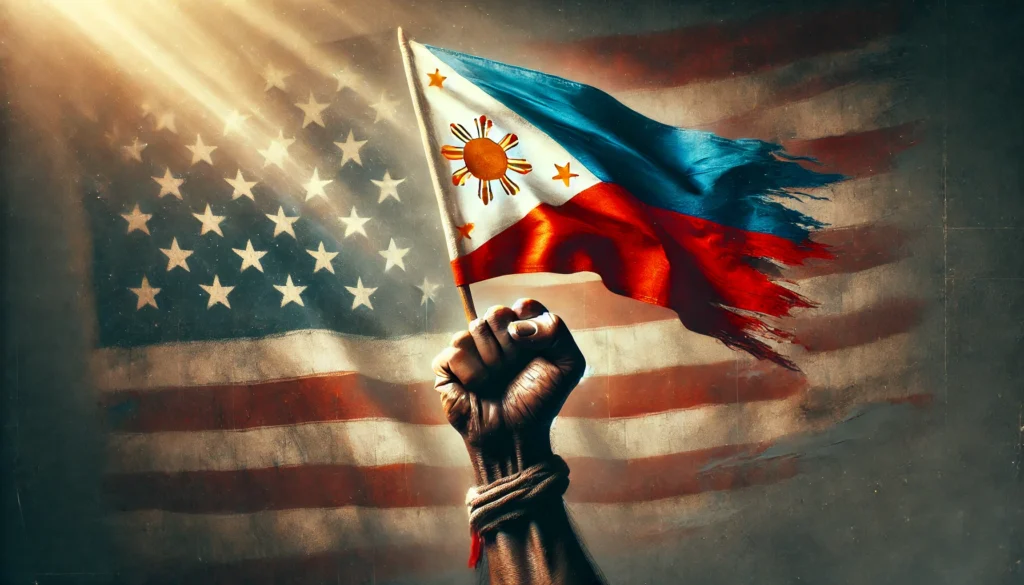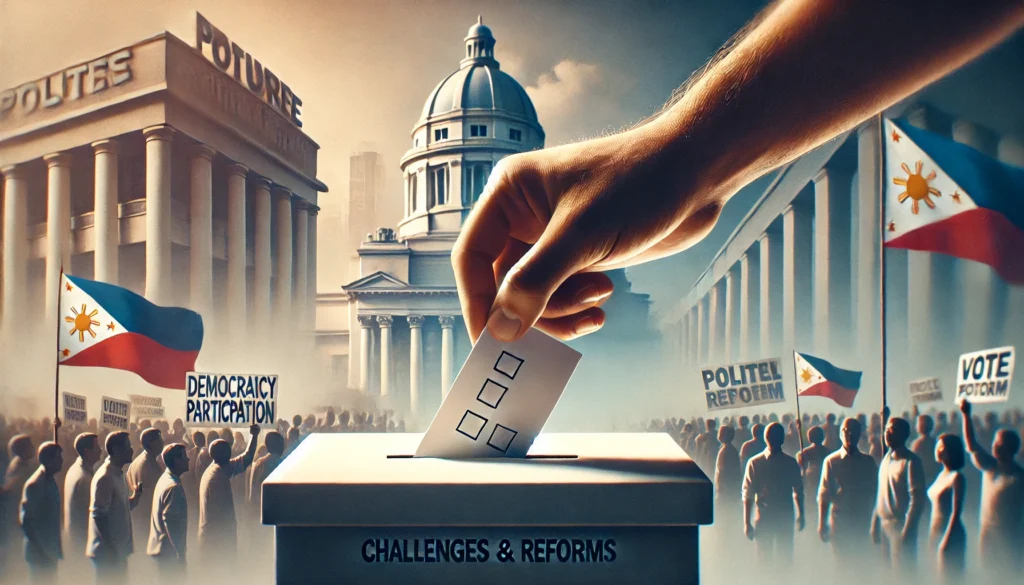The transfer of power from Spanish to American colonial rule in the Philippines marked a significant turning point in the country’s history. Following the Spanish-American War of 1898, the United States acquired the Philippines from Spain through the Treaty of Paris. This transition set the stage for a new era of colonial governance and the eventual rise of Filipino nationalism.
The Philippine-American War
The initial promise of independence by the Americans was short-lived, leading to the Philippine-American War (1899-1902). This conflict, often referred to as the Philippine Insurrection by American historians, was a bloody struggle that resulted in significant casualties on both sides. The war’s aftermath saw the implementation of American colonial policies, which would profoundly impact Filipino society and political consciousness.
American Colonial Policies and Their Impact
The American colonial administration introduced several policies that aimed to modernize the Philippines while maintaining control over the archipelago. These policies, while often touted as benevolent, had far-reaching consequences for Filipino society and played a crucial role in shaping nationalist sentiments.
Education and Language Policy
One of the most significant American initiatives was the establishment of a public education system. The introduction of English as the medium of instruction had profound effects on Filipino culture and identity. While it provided access to Western knowledge and literature, it also led to the gradual erosion of native languages and traditional cultural practices.
| Year | Number of Public Schools | Student Enrollment |
|---|---|---|
| 1900 | 150 | 21,000 |
| 1910 | 4,531 | 355,722 |
| 1920 | 7,215 | 1,038,086 |
| 1930 | 7,979 | 1,262,353 |
Economic Policies
The American administration implemented economic policies that integrated the Philippines into the global market economy. The Payne-Aldrich Tariff Act of 1909 established free trade between the U.S. and the Philippines, leading to increased agricultural exports but also creating economic dependency.
- Sugar production increased from 80,000 tons in 1900 to 996,000 tons in 1934
- Coconut oil exports rose from 100,000 tons in 1900 to 1,400,000 tons in 1934
- Manila hemp exports grew from 89,000 tons in 1900 to 179,000 tons in 1934
These economic changes brought prosperity to some sectors but also widened the gap between the elite and the masses, fueling social discontent and nationalist sentiments.
The Emergence of Filipino Nationalist Movements
The American colonial period saw the emergence and growth of various nationalist movements, each contributing to the development of Filipino national identity and the push for independence.
The Partido Nacionalista
Founded in 1907, the Partido Nacionalista became the primary vehicle for advocating Philippine independence through legal and political means. Led by prominent figures such as Sergio Osmeña and Manuel Quezon, the party dominated Philippine politics during the American colonial period.
The Philippine Independence Movement
The Philippine Independence Movement gained momentum in the 1920s and 1930s, with Filipino leaders lobbying in Washington D.C. for legislation that would grant independence. This effort culminated in the passage of the Tydings-McDuffie Act in 1934, which provided for Philippine independence by 1946.
Cultural Nationalism and the Filipino Identity
The American colonial period also witnessed a cultural renaissance that significantly contributed to the formation of a distinct Filipino national identity.
Literature and the Arts
Filipino writers and artists began to explore themes of national identity, colonial resistance, and cultural heritage. Notable works include:
- “Noli Me Tángere” and “El Filibusterismo” by José Rizal (though written during the Spanish period, they gained wider readership during the American era)
- “The Social Cancer” by Lope K. Santos
- Paintings by Fernando Amorsolo depicting rural Filipino life
The Vernacular Press
The growth of the vernacular press played a crucial role in disseminating nationalist ideas and fostering a sense of shared identity among Filipinos. Newspapers and magazines in local languages became platforms for discussing political issues and cultural matters.
The Role of Filipino Intellectuals and Leaders
Filipino intellectuals and leaders played a pivotal role in articulating nationalist aspirations and mobilizing public opinion. Their contributions shaped the discourse on Filipino identity and independence.
Manuel L. Quezon
As the leader of the Nacionalista Party and later the Commonwealth government, Quezon was instrumental in negotiating for Philippine independence and shaping the political landscape of the pre-independence era.
Claro M. Recto
A prominent nationalist, Recto advocated for economic independence and the preservation of Filipino culture. His critiques of American policies and call for “Filipinization” resonated with many intellectuals and political leaders.
The Commonwealth Period and the Road to Independence
The establishment of the Philippine Commonwealth in 1935 marked a significant step towards independence. This period saw the implementation of policies aimed at preparing the Philippines for self-governance.
Constitutional Development
The 1935 Constitution, drafted by Filipinos and approved by the American government, laid the groundwork for the future independent Philippine republic. It established a presidential system of government and enshrined civil liberties and social justice principles.
Economic Preparations
The Commonwealth government, under the leadership of Manuel Quezon, implemented policies aimed at developing the Philippine economy and reducing dependence on the United States. These included:
- The National Economic Protectionism Association (NEPA)
- The National Rice and Corn Corporation (NARIC)
- The promotion of local industries and agricultural diversification
World War II and Its Impact on Filipino Nationalism
The Japanese occupation during World War II (1942-1945) had a profound impact on Filipino nationalism. The experience of foreign occupation strengthened the resolve for independence and national unity.
The Resistance Movement
The Filipino resistance against Japanese occupation took various forms, from guerrilla warfare to underground political organizations. This shared struggle further solidified the sense of national identity and unity among Filipinos.
Post-War Nationalism
The devastation of World War II and the subsequent American liberation reinforced the Filipino desire for true independence. The post-war period saw intensified efforts to secure the promised independence by July 4, 1946.
The Legacy of American Colonial Rule on Filipino Nationalism
The American colonial period left an indelible mark on Filipino nationalism and the country’s path to independence. Its legacy continues to shape Philippine politics, culture, and society to this day.
Positive Impacts
- Establishment of democratic institutions
- Expansion of public education
- Modernization of infrastructure and public health systems
Negative Impacts
- Economic dependency on the United States
- Cultural Americanization and language shift
- Persistence of social and economic inequalities
Conclusion: The Continuing Evolution of Filipino Nationalism
The rise of Filipino nationalism under American rule was a complex process shaped by various factors, including colonial policies, cultural movements, and global events. While the granting of independence in 1946 marked the achievement of a long-sought goal, the quest for true national sovereignty and identity continues to evolve in the post-colonial era.
The legacy of this period remains evident in contemporary Philippine society, influencing political discourse, cultural expression, and the ongoing negotiation of the country’s relationship with the United States and its place in the global community.
Disclaimer: This article aims to provide an accurate and comprehensive overview of the rise of Filipino nationalism under American rule based on historical records and scholarly research up to 2023. However, historical interpretations may evolve, and new information may come to light. Readers are encouraged to report any inaccuracies or provide additional insights so that this content can be reviewed and updated as necessary. The complex nature of historical events means that different perspectives may exist, and this article should be considered as one contribution to the ongoing scholarly discourse on this important period in Philippine history.




